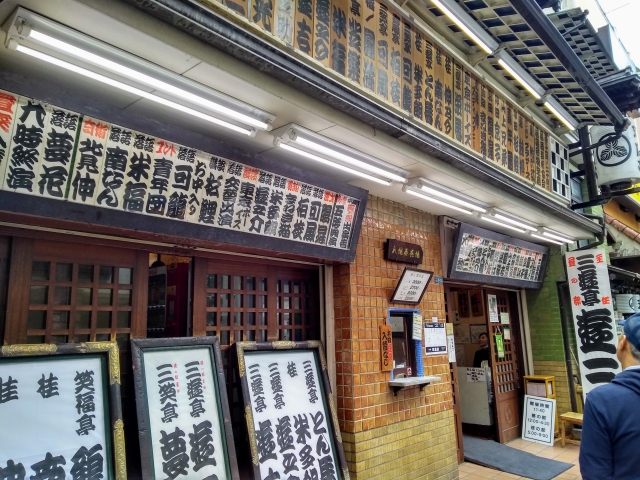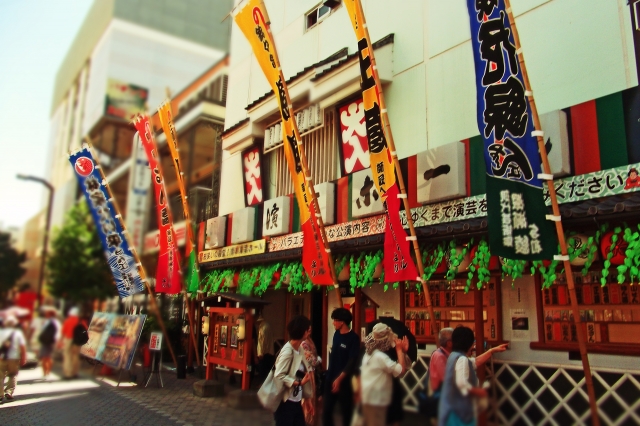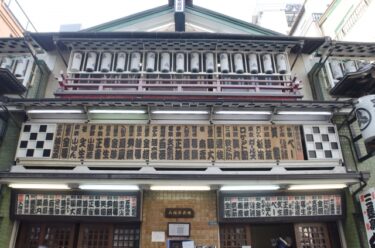Introduction
Rakugo, Japan’s traditional form of comedic storytelling, has been a beloved part of the country’s cultural heritage for over 400 years. Performed by a solo storyteller sitting on a cushion, rakugo brings everyday characters and situations to life through humor and clever dialogue. While its nuances are deeply rooted in Japanese language and culture, rakugo has crossed borders, with performances in English, making it accessible to a wider audience. This guide will introduce you to the world of rakugo, including where you can enjoy it in Japan, how to buy tickets, and how a foreigner has made a name for himself as a rakugoka (rakugo performer).
What is Rakugo?
Rakugo is a form of traditional Japanese entertainment where a lone storyteller, known as a rakugoka, performs a humorous monologue or dialogue while seated on a cushion called a zabuton. The performer only uses a folding fan (sensu) and a cloth (tenugui) as props, but with skillful gestures, voice modulation, and facial expressions, they vividly portray multiple characters in the story.
A typical rakugo story features comical misunderstandings, witty conversations, and a punchline known as an ochi (落ち), or “fall.” These stories can range from humorous anecdotes to heartfelt tales, often revealing moral lessons or reflecting on human nature. The rakugoka remains seated throughout the performance, but with subtle changes in posture and voice, they switch between different characters in a dialogue, often changing from young to old, or male to female, within seconds.
A Brief History of Rakugo
Rakugo originated during the Edo period (1603–1868) and was initially a form of street performance. It evolved into a more refined art form, performed in dedicated yose theaters across Japan. The art of rakugo became especially popular in the major cities of Edo (now Tokyo), Osaka, and Kyoto, each developing their own style.
Rakugo has survived through the centuries by adapting to changing tastes, and many of the classic stories from hundreds of years ago are still performed today. Modern rakugo can even include commentary on contemporary social issues, showing the versatility and enduring appeal of the art.
Where Can You Experience Rakugo?
If you’re interested in experiencing rakugo firsthand, there are several places across Japan where you can watch performances.
Tokyo
Tokyo is home to iconic yose theaters like Suehirotei in Shinjuku and Asakusa Engei Hall, where you can watch traditional performances almost every day.
Suehirotei
Address:3-chōme-6-12 Shinjuku, Shinjuku City, Tokyo 160-0022
Map
URL:https://www.suehirotei.com/

Asakusa Engei Hall
Address:1 Chome-43-12 Asakusa, Taito City, Tokyo 111-0032
Map
URL:https://www.asakusaengei.com/

Osaka
In Osaka, known for its own rakugo style called Kamigata rakugo, you can visit Namba Grand Kagetsu.
Namba Grand Kagetsu
Address:11-6 Nanbasennichimae, Chuo Ward, Osaka, 542-0075
Map
URL:https://ngk.yoshimoto.co.jp

Kyoto
Kyoto, another cultural hub, also has regular rakugo performances.
Most of these theaters offer performances in Japanese, but non-Japanese speakers can still enjoy the physical comedy, facial expressions, and atmosphere.
Where to Buy Tickets for Rakugo
Buying tickets for rakugo performances can be done in several ways:
- Online: Many rakugo theaters have online ticket booking systems, with English-language websites or assistance available at some venues, such as Asakusa Engei Hall. Platforms like Rakuten and Pia Ticket also offer rakugo tickets.
- At the venue: You can often purchase tickets at the theater on the day of the performance, though popular shows may sell out, so arriving early is recommended.
- Convenience stores: In Japan, major convenience stores like 7-Eleven and Lawson offer ticket services through kiosks inside the stores. Staff can often help you navigate the machines, which may have an English option.
Prices for rakugo performances vary but are generally quite affordable, ranging from ¥2,000 to ¥5,000 depending on the performer and venue.
Can Foreigners Become Rakugoka? The Case of Katsura Sunshine
A fascinating aspect of modern rakugo is the involvement of foreigners in the traditionally Japanese art form. The most famous example is Katsura Sunshine, a Canadian-born rakugoka. Katsura Sunshine made history by becoming the first Western rakugoka in the Kamigata tradition after apprenticing under the revered Katsura Bunshi VI.
Sunshine performs rakugo in both Japanese and English, making this rich cultural tradition more accessible to non-Japanese speakers around the world. He regularly performs internationally and has even staged shows on Broadway in New York and in London’s West End. His success shows that, while rakugo is steeped in Japanese culture, it has the potential to resonate with people from all backgrounds.
Here is a video of Katsura Sunshine below.
Katsura Sunshine’s RAKUGO IN ENGLISH – TEN MINUTE EXCERPT is a condensed 10-minute performance showcasing a portion of rakugo in English. The content features a short story that blends traditional elements of Japanese rakugo with humor that is easy for English-speaking audiences to understand.
Typically, Katsura Sunshine’s English rakugo includes the following elements:
- Introduction to Japanese Culture: In the introduction, he often provides a lighthearted explanation of Japanese customs or cultural aspects, making the background of rakugo more accessible to the audience. In this excerpt, Katsura Sunshine likely introduces some humorous aspect of Japanese life or traditions in a way that English-speaking audiences can appreciate.
- Story Development: Following the typical rakugo structure, the story unfolds through a dialogue between multiple characters, all performed by the storyteller. Katsura Sunshine changes his voice and gestures to portray different characters, leading to a comical interaction. In this performance, though short, it likely includes amusing exchanges between characters.
- Punchline (Ochi): Every rakugo performance ends with a punchline, or “ochi,” which delivers the final comedic twist. Even in English, Katsura Sunshine keeps the pacing quick and lively, ensuring that the audience laughs at the end. In this excerpt, it is likely that the performance culminates in a punchline that leaves the audience in laughter.
His performances aim to transcend language barriers and bring the charm of rakugo to life for non-Japanese speakers. Katsura Sunshine delivers his performances in a way that is easy to follow and entertaining, especially for English-speaking audiences.
English Rakugo: Bringing the Art to a Global Audience
Rakugo in English is gaining traction as more non-Japanese audiences become interested in this traditional art form. Aside from Katsura Sunshine, other Japanese performers have also begun to incorporate English rakugo into their repertoires, especially in international settings or during special performances aimed at foreign audiences.
For example, Tokyo’s Suehirotei and other yose theaters occasionally hold rakugo events with English subtitles or English-speaking rakugoka. These performances are designed to help foreign audiences enjoy rakugo without needing to be fluent in Japanese, while still appreciating the cultural nuances and humor of the art.
Why You Should Experience Rakugo
Rakugo offers a unique window into Japanese culture, history, and humor. Whether you’re a language learner, a fan of live theater, or simply curious about Japanese traditions, rakugo provides an entertaining and engaging way to immerse yourself in Japan’s storytelling traditions. The blend of humor, character acting, and cultural commentary makes rakugo an art form that, despite its deep roots in Japanese society, can be appreciated by people from all over the world.
In Conclusion
Rakugo is not just a Japanese art form; it’s a timeless way of connecting through storytelling. Whether you experience it in Japanese or English, rakugo remains a delightful way to explore Japanese culture. If you’re in Japan, don’t miss the chance to see a live rakugo performance—it’s an experience that combines humor, tradition, and the unique art of solo performance in a way that’s sure to leave an impression.







